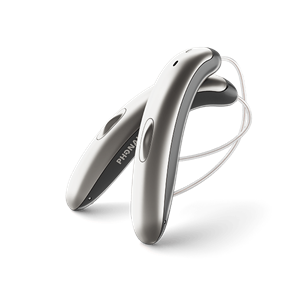Do Your Ears Get Red and Hot? 10 Reasons Why! | Connect Hearing

Do Your Ears Get Red and Hot? 10 Reasons Why! | Connect Hearing
12 min.
Publication Date: May 3, 2021
Red Ears — it’s something that happens occasionally and there is usually an easy explanation. The outer ear has delicate, sensitive skin and is made up of “hills and valleys” that collect sound waves and channel them into the auditory canal. But sometimes, things can happen to cause what’s called vasodilation where blood flows to the external ear causing it to appear red, hot, and irritated.
Most of the time, the color returns to normal on its own and the ear is none the worse for wear. However, sometimes it can be related to a medical concern that will require a trip to the doctor and a possible prescription.
Why Do My Ears Get Red and Hot?
You may have heard the phrase, “that person has smoke coming out of their ears”, or “are your ears burning”? These are common idioms that use red, hot ears to denote emotion — anger, anxiety, frustration. But although these phrases are part of popular jargon, there are real situations or conditions that can cause your ears to become red and hot.
Let’s look at 10 possible causes. First, we’ll look at some of the most common causes that shouldn’t be cause for alarm. Then we’ll look at inflamed ear conditions that may be painful and require medical treatment.
- An Emotional Response Causes Red Ears - Sometimes when we have an emotional response, such as anxiety, anger, or embarrassment, our skin flushes causing our ears to turn red and become hot. This occurs spontaneously when blushing and returns to normal relatively quickly.
- Hot or Cold Temperatures - When exposed to very hot or cold temperatures, our ears will often turn red and heat up. As skiers and snowboarders know, wearing a hat while on the slopes can be a good way to avoid fluctuating temperatures. Once your ears return to a normal temperature, so does their appearance.
- Watch Out for that Sunburn - Sunburn is a common cause of the outer ear becoming hot and red and often doesn’t become noticeable until you are out of the sun. Whether exercising, gardening, or participating in sports, it’s always a good idea to wear sunscreen and/or a hat or helmet to prevent sunburning your ears. If you do get a sunburn, try applying an ice pack to the affected ear to help turn down the heat. Also, hydrocortisone cream or aloe vera gel can be a great way to lessen the pain and help the ears return to normal.
- Hormonal Changes or Medication Can Cause Flushing - Sometimes, when you notice you are getting red, hot ears, it can be a sign of hormonal changes or medication. Menopause, hot flashes, chemotherapy treatments can all cause your ears to flush and become red and hot. If that happens, try dressing in layers and avoid alcohol and caffeine as ways to keep your temperature better regulated.
- Ear Infection or Otitis Media - Ear infections are brought on by fluid accumulating in the middle ear causing inflammation and pain and are a chief culprit of red, hot ears in children and young people. In fact, red and hot ears can be the best way to recognize the need for medical treatment in babies and small toddlers that can’t verbally explain what’s happening. At first, try over-the-counter pain medications and warm compresses to abate the pain. If that doesn’t work, then a doctor may prescribe antibiotics to stop the infection.
- Injuries or Trauma to the Ear - Any time there is an injury or trauma to the ear, it will often turn red and hot. Piercings, scratches, and bug bites are just some of the ways that you can injure your ear and the use of pain medication can be the best solution until the injury is resolved. When participating in sports like bike riding or skateboarding, a good preventive idea is to wear a helmet that covers the ears and provides protection.
- Red ear syndrome - Red Ear Syndrome (RES) is a rare condition that presents as a severe burning sensation in one or both ears and is often accompanied by migraines or cluster headaches. While not very much is known about the syndrome, it lasts anywhere from an hour to several hours and can recur daily. Ice packs and anti-inflammatories seem to work best to help the pain subside, however, severe symptoms may require a visit to the doctor for a prescription.
- Trigeminal Nerve Pain Affecting the ears, as well as the neck, lower face, and jaw - Trigeminal Neuralgia can begin as mild but will become progressively worse if left untreated. Triggered by routine tasks like eating or brushing teeth, the pain can be excruciating and should be treated by a doctor as soon as possible.
- Seborrheic Eczema - More common, Seborrheic Eczema is a skin condition that causes red, hot, scaly patches on the ears, as well as the scalp, upper back, and face. While it can be triggered by stress, hormonal changes, and even harsh detergents, it often follows a pattern of flaring up and then clearing that can last for several years.
- Erythermalgia - Brought on by warm temperatures or exercise, this extremely rare condition or disorder affects the extremities, including the ears, and causes burning distress, redness, and an increased skin temperature. This disorder should be diagnosed by a physician who would prescribe medication to alleviate or at least control the symptoms.
To Sum Up About Red and Hot Ears
While most causes of red and hot ears are normal events, there are a few significant illnesses or disorders that are characterized by inflamed ears. These require attention by a doctor and over the course of treatment may include over-the-counter medications or prescriptions to manage pain and symptoms.
Author
Connect Hearing Canada



